When we arrived at Camping Pena Montanesa I asked the person checking me in whether there were any nice walks from the campsite. He told me about 3 or 4 including one to a place called Ainsa.
As we were getting Basil set up I had a thought, at the back of my mind, that the name Ainsa rang a bell. While we were sitting having our obligatory arrival cup of tea I had a look at various notes that I keep and discovered that Ainsa was fifth on the El Pais list of Spain’s most beautiful towns. Furthermore, so unique were its buildings, it was given special status by the Spanish government in 1962.
Since we are only on site for two nights, our minds were well and truly made up – a walk to Ainsa it must be.

View. Today we could see the tops. If you look carefully you will see snow topped peaks to the left.
So, this morning, after breakfast, we donned our walking boots, for only the second or third time this trip and set off on the cross country track to Ainsa.
We had only walked a hundred metres or so when we came across a traditional sheep dog guarding a flock of sheep. In Britain, as far as I know, our only working sheep dogs are used for rounding sheep up. However, in parts of Europe which still have wolves, the traditional type of sheep dog whose role is to defend its flock is much more common. There are many different varieties, but they are bred to form a special bond with a flock of sheep so that if threatened the dog will protect its flock. This particular flock was, luckily for us, behind wire, so although the dog made a good show, it was just show in this case, which is just as well because Melek would surely have seen it off!
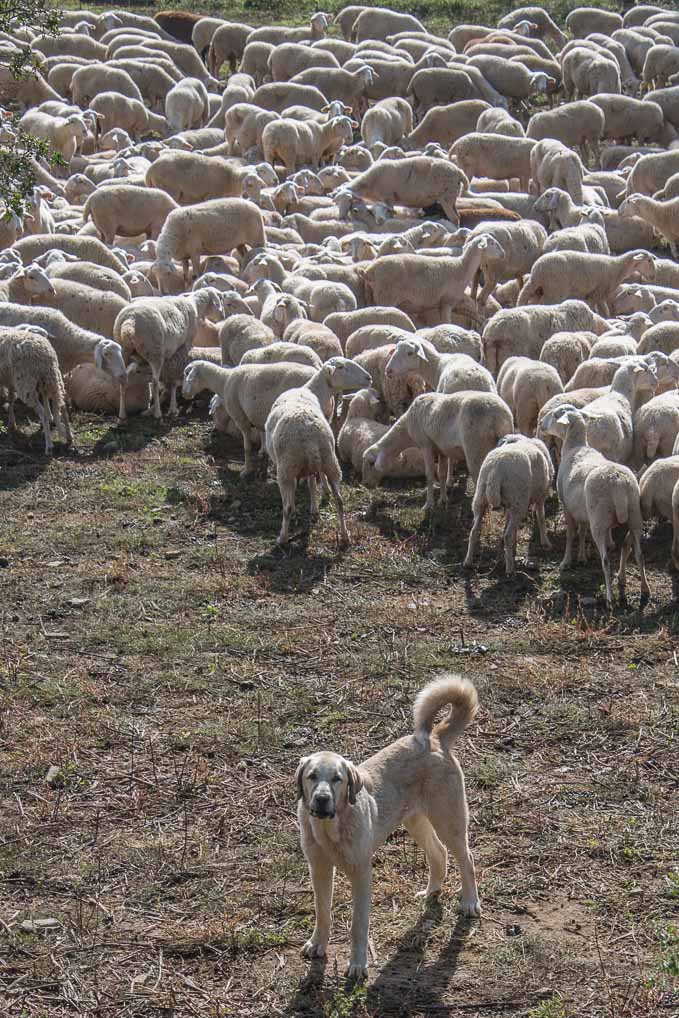
Traditional Sheep Dog doing its job – against us.
The rest of the walk was uneventful, but in my opinion was the best of the walks we have done this trip, which isn’t saying all that much. Sarah loves her walks along beaches, but I prefer the countryside.
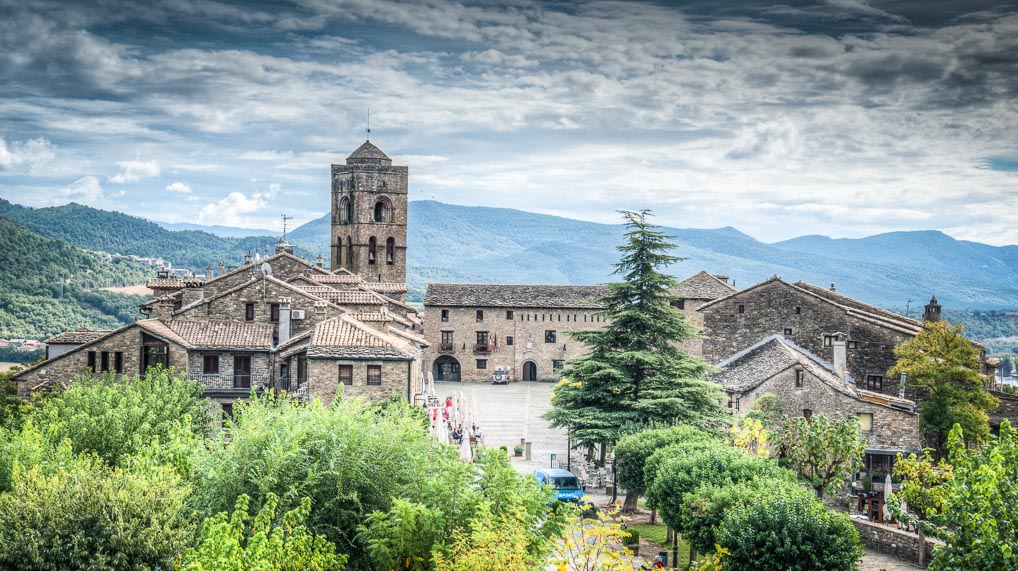
Ainsa
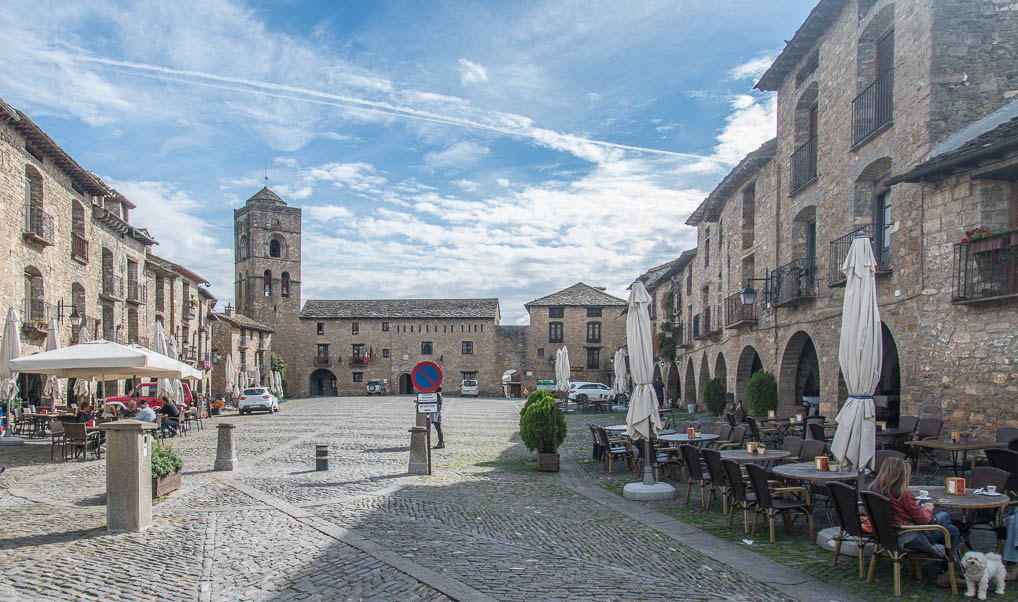
Plaza Major
Ainsa turned out to be as pretty as a picture. It is thought that virtually all of the houses, in what is a small two street village, were build in the 12thand 13thcenturies, and apart from some of them having had their traditional stone slab roofs replaced with tiles, nothing much has changed for nearly 800 years. I would have to add to this that one or two have changed their traditional use to restaurants, but it is as complete example of an old village as one could wish for.
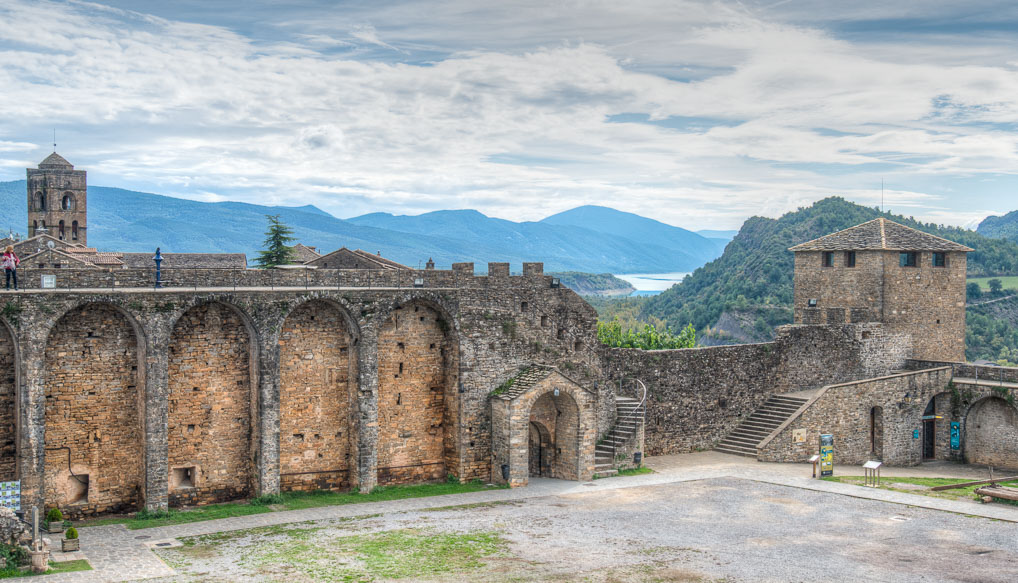
Ainsa Castle
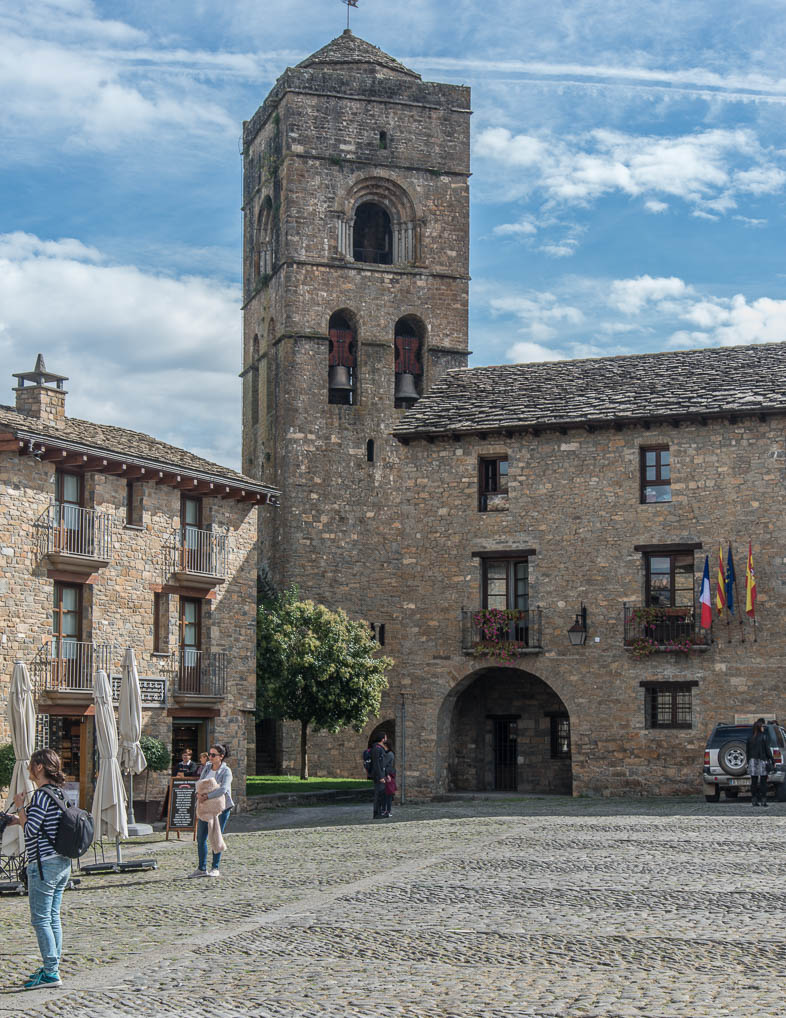
Romanesque church at Ainsa
I suspect it must be very busy in the summer, but luckily for us a Thursday in late October is not the height of their tourist season and it was, as a result, a very relaxing place to have a wander and finally to have lunch on the main square.

Ainsa street scene
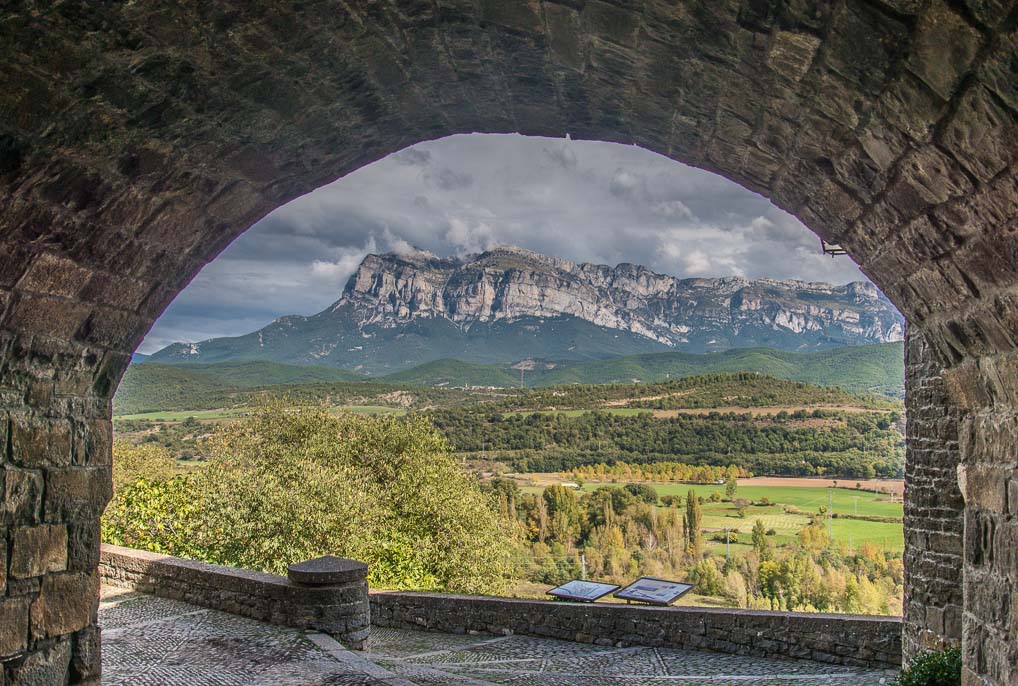
View from Ainsa
The walk back was downhill, all the way, which is always a good way to end a ramble.
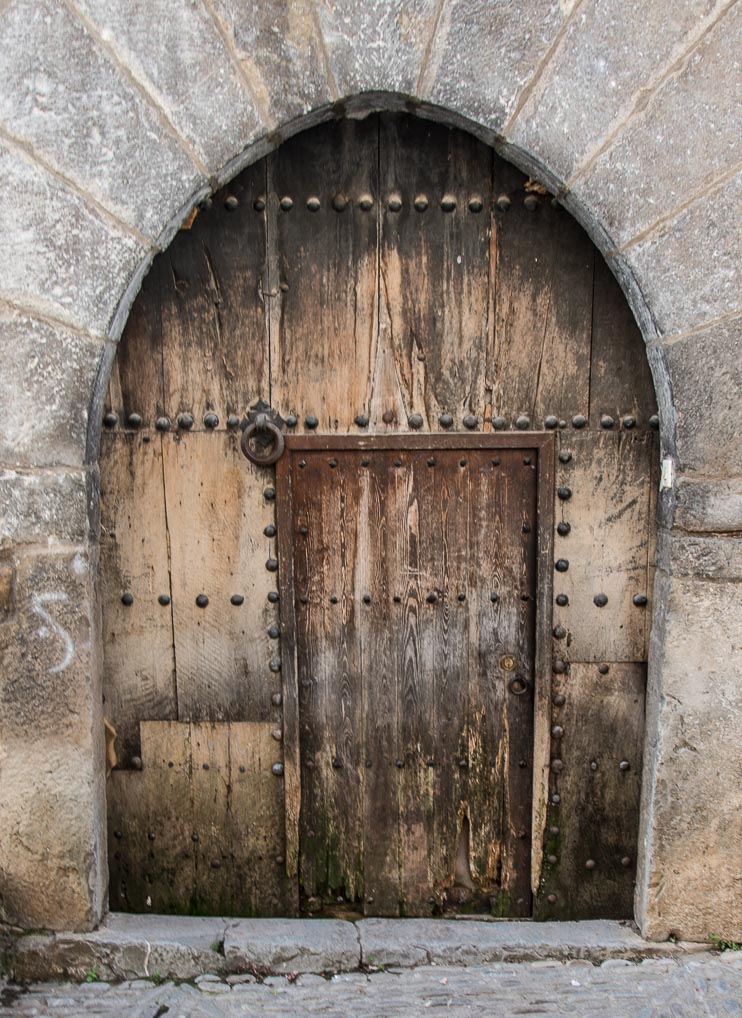
Door of the day

Church Cloisters
Tomorrow is going to be a long day of driving – over the Pyrenees, into France. We are aiming for the UNESCO World Heritage town of Albi, to the north east of Toulouse. If there’s no blog tomorrow it will because we arrive late!
